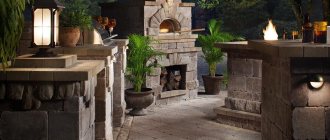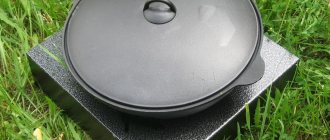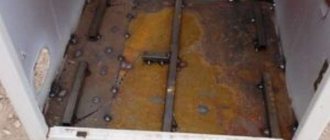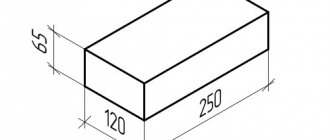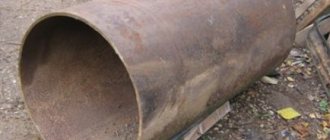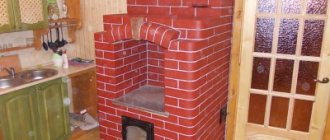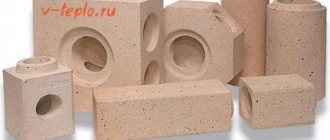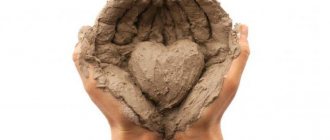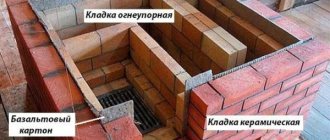Preparing the foundation for a brick bath stove
A brick oven made in a bathhouse with your own hands weighs several tons. Taking up a small area, it exerts a large specific pressure on the base with its weight. Therefore, stone sauna stoves are installed on their own foundations.
To select the location of the foundation, we lower the plumb line strictly in the middle of the hole in the roof for the chimney. The plumb line will indicate on the ground the place of the projection of the center of the smoke channel. Starting from this point, with an allowance of 10 cm in each direction, we mark the plan of the pit for the foundation.
The depth of the hole should be below the freezing point of the soil. The foundation for a stove in a brick bath should not be associated with the foundation of the building itself. Sand is poured at the bottom of the pit and on top of it - small stones, gravel and concrete chips. All this is carefully compacted. Then the welded frame of the foundation is laid and the cement mortar is poured.
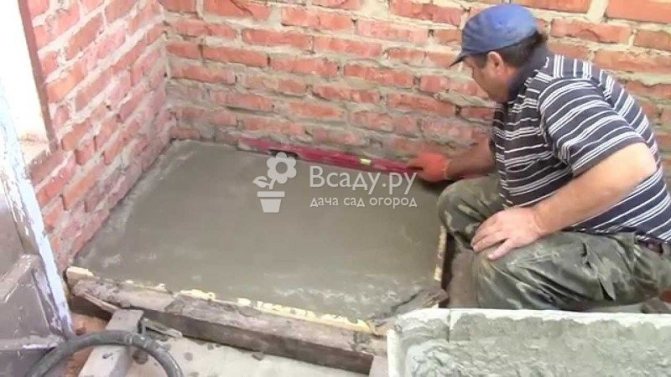
Preparation of the foundation of the furnace for a brick bath, photo
The upper cut of the foundation for a brick bath stove should be perfectly horizontal. Any deviation from the horizon is fraught with the deviation of the stove to the side, both during construction and during its use.
The top of the foundation should be a few centimeters below the floor. Then, for waterproofing, two layers of roofing material are laid, on top of which one layer of brick is laid, and on top of it is a metal sheet that serves to protect the wooden floor from fire.
Sauna stove design
To build sauna stoves from bricks - the experience of a bricklayer alone is not enough! Significant local heating of the combustion chamber and the associated thermal expansion of the stone can easily destroy the brickwork after several good warming ups. Therefore, for self-construction, it is better to focus on the design with a "floating firebox". In this case, the combustion chamber is laid out from fireclay bricks, which lays down on a special furnace solution.
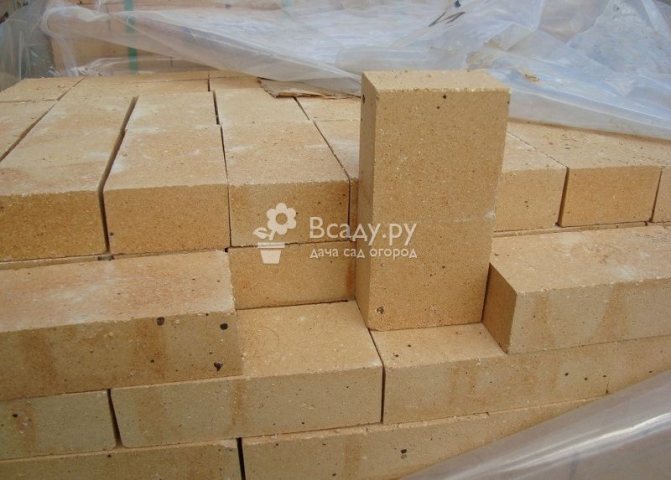

Fireclay refractory brick for the combustion chamber of the furnace for a bath
Around it, already from ordinary ceramic bricks, the outer walls of the furnace are erected. The combustion chamber and the outer walls are not rigidly connected to each other. Therefore, linear expansion of the combustion chamber will not cause destruction of the outer masonry.
In addition, under the influence of the high combustion temperature of the fuel, reaching 1100-1400 degrees, fireclay bricks are sintered into a single monolith with clay mortar and smoke does not penetrate outside, even if the seam between the bricks of the outer masonry crumbles over time.
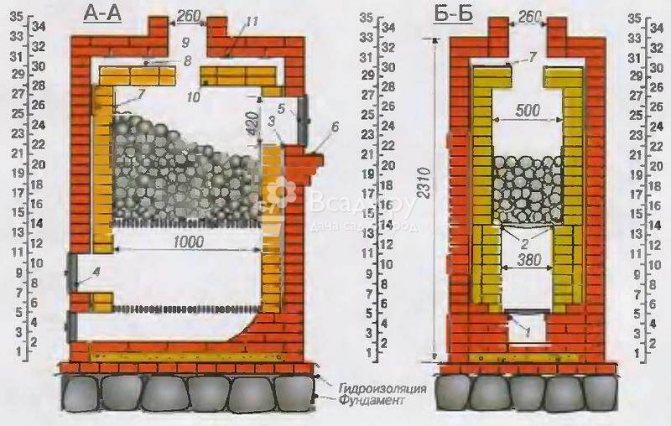

Brick oven for a bath with your own hands, drawings
The figure shows a plan of the structure of the furnace. Numbers marked:
- steel corners - cast iron grates of the furnace are superimposed on them;
- corners for grates on which cobblestones are laid to accumulate heat;
- clearance to compensate for thermal expansion;
- door for the combustion chamber;
- steam outlet to increase air humidity in the bath;
- metal facing of the shelf-stand;
- heat-reflecting steel screen;
- upper temperature gap (30-50 mm);
- chimney;
- overlapping the firebox;
- steel corners for laying the arch of the furnace.
What kind of brick to lay on an iron stove in a bath
Not every type of brick is suitable for lining the furnace; here you need a material with a high value of thermal inertia, refractory, solid, which does not deform at high temperatures.
Therefore, when choosing a material for these purposes, one should immediately exclude those brick options that are unsuitable for lining the furnace.It is a silicate, slip and raw brick. The first type is not heat-resistant, it conducts heat well (the thermal conductivity coefficient of silicate brick masonry is 0.7 W / m * K at a density of 1800 kg / m3) and is destroyed by high temperatures. Slip is also a bad option, it will crumble from regular heat exposure. As for the raw brick, the material is hygroscopic, which absolutely does not meet the requirements of the planned work.
It is best to buy a special oven brick. In fact, this is the same ceramic, only made from high quality selected raw materials. Its cost is much more expensive than conventional ceramic and depends on the brand and manufacturer. Heat-resistant fireclay bricks are also extremely rarely used for cladding, the main field of its application is the construction of fireplaces and the furnaces themselves. It belongs to the high price category of furnace materials.
Thus, the choice of brick for the bath and in particular for the construction of the screen most often falls on the red ceramic piece material. It is obtained from clay (additives that form certain properties are possible) by firing. As a result of the technological process, ceramic brick acquires excellent strength and frost resistance. Two methods of its manufacture are used: plastic molding and semi-dry pressing. For the lining of the furnace, a brick produced using plastic molding technology with subsequent firing at a temperature of more than 900 degrees is more suitable. Products manufactured using the dry pressing method are less resistant to variable thermal loads.
The construction market offers interesting samples of bricks with a textured surface. Applying it, you can make the original decorative design of the stove.
Do-it-yourself brick masonry oven for a bath
If, during the construction of a house, the joints between bricks can reach 10 mm, then for a furnace their thickness of more than 4 mm is already a disaster. From periodic heating, such seams crumble very quickly, and smoke and carbon monoxide begin to flow into the room. Therefore, brick ovens for a bath must be erected from the same one-size brick with an even bed and side walls.
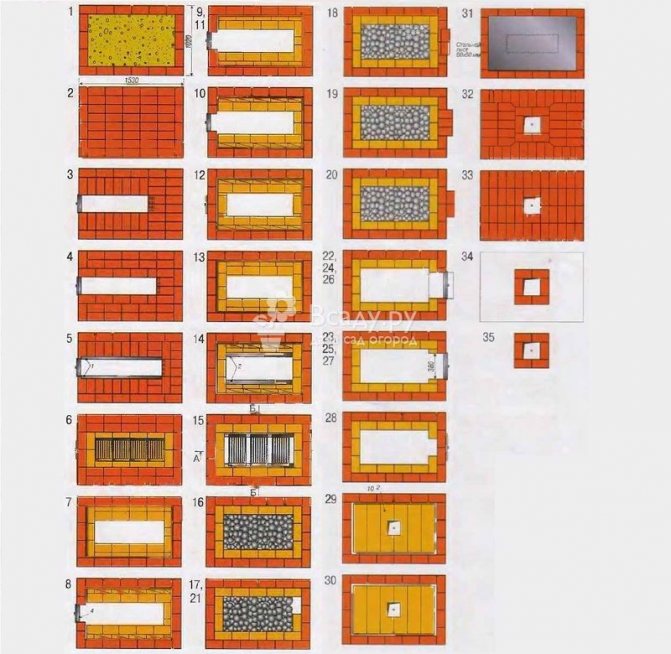

Brick ovens for a bath - drawings with orders
Sauna stove ordering
Experienced craftsmen spare no time for preliminary erection of the lower part of the furnace dry - without mortar. This makes it possible to select the necessary bricks, number them, assess possible problems, make cuts and prepare pieces of the required size and shape. Then the "dry masonry" is disassembled and repeated with the mortar.
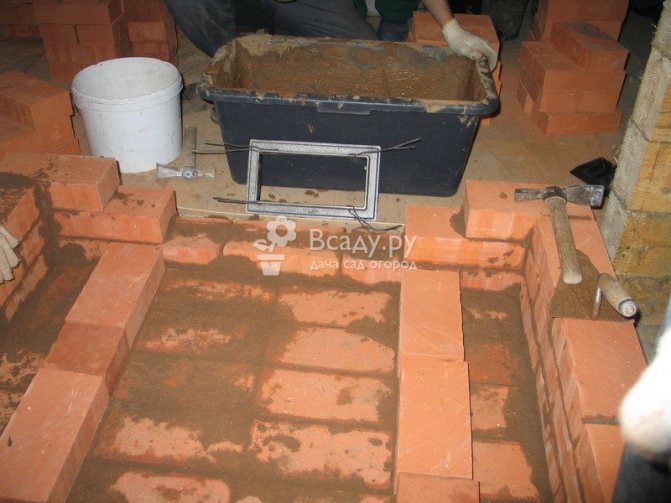

Brick stove for a bath - masonry photo
The first row should be laid out very carefully. It should be perfectly horizontal, and the dimensions of the diagonals of the resulting rectangle should be equal to each other.
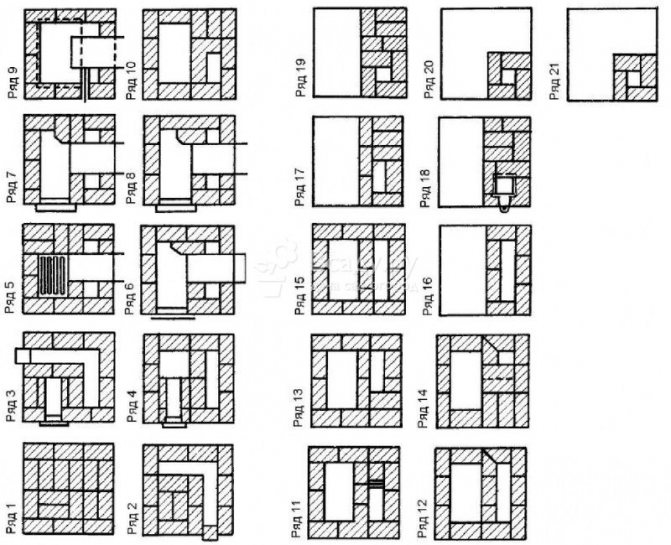

Ordering a brick sauna stove
On the bricks of the first row, using a plumb line, the vertical of the furnace walls is further checked. The horizontal is checked with a long level (the length of the level should be greater than the diagonals), and the sameness of the diagonals - with a lace. In addition, right angles and a straight line of the sidewalls of this row are checked. Subsequently, each row is also level controlled and checked for vertical.
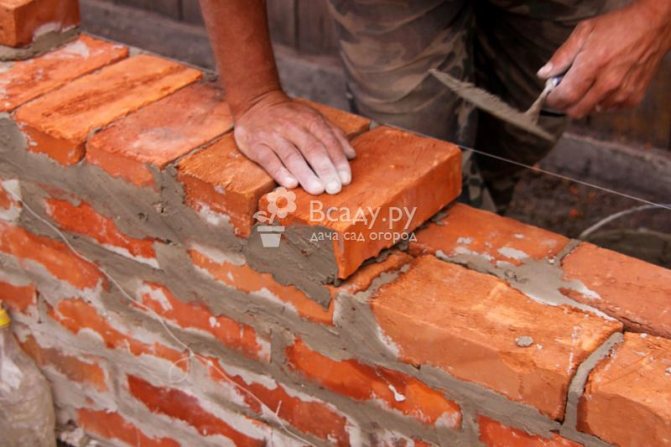

Laying the wall of the oven for a bath with your own hands from bricks
For attaching the blower door on the 3rd row, use galvanized steel wire or a strip of mild steel. So that the door fasteners do not interfere with the masonry, grooves are selected in the brick with a grinder, where the wire is recessed.
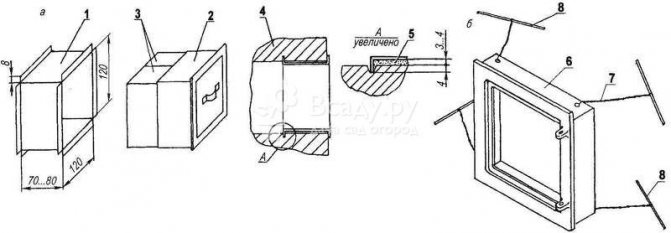

Fastening the oven door for a bath with your own hands from brick
Under the steel corners on the 5th row, platforms are also selected with a grinder so that the metal is flush with the brick plane. The grates are freely placed on the corners and, if they burn out, they can also freely change to new ones.In addition, by their expansion, the grates do not destroy the brickwork.
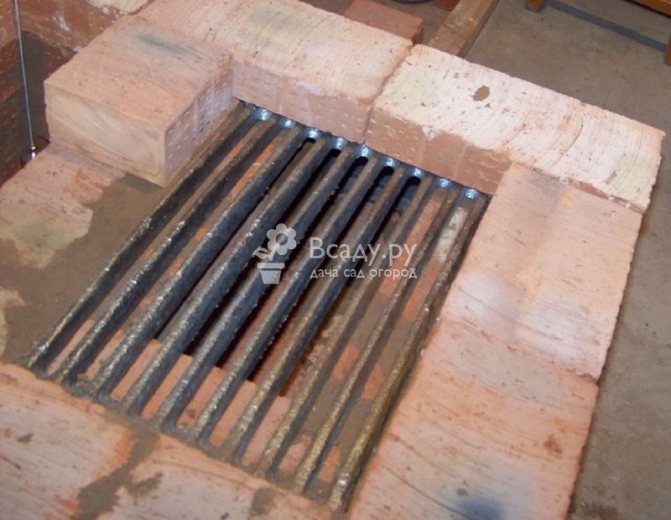

Grates for a brick sauna stove
Next, you should start building the combustion chamber, and after it, continue to raise the outer walls. In this way, it is much more convenient to maintain the required dimensions of the high-temperature furnace and adjust the dimensions of the thermal gaps between it and the outer wall.
We lay out the firebox of the sauna stove
The furnace masonry is made of fireclay oven bricks and refractory clay. It is impractical to make the entire furnace out of fireclay bricks, since it has a low heat capacity and cools quickly. On the other hand, the use of ordinary red bricks in the firebox, even ceramic, leads to its rapid destruction from high temperature, and the stove in a brick bath with your own hands simply fails.
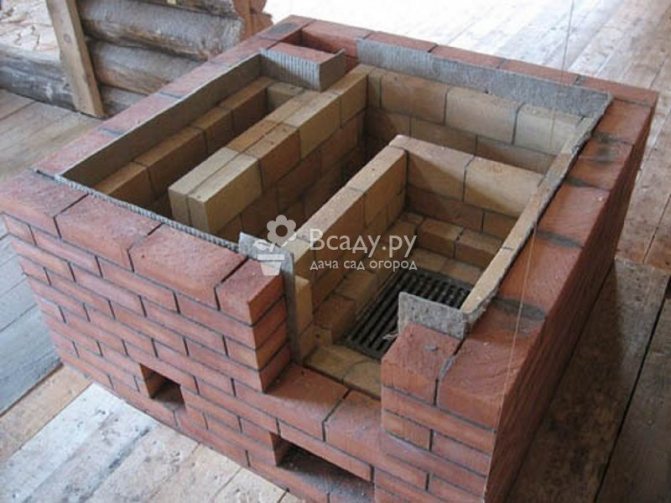

Bricklaying of the furnace chamber for a brick bath
The firebox doors, as well as the heater chamber doors, are fastened with wire or metal strips, as mentioned above. The perimeter of the door frames should be wrapped with an oven basalt cord, which compensates for thermal fluctuations in size. Similar compensation is done on the guide frames of the chimney valves.
We select grates and stones for the bath
Particular attention should also be paid to the selection of grates. They operate in very aggressive temperature conditions and therefore can burn out quickly. Therefore, grates are usually made of heat-resistant thick cast iron, but in no case from reinforcement, construction wire rod, no matter how thick it is. Beautiful do-it-yourself brick sauna stoves are obtained from scrap rails or rail linings. The service life of such grates exceeds the service life of the stone furnace itself.
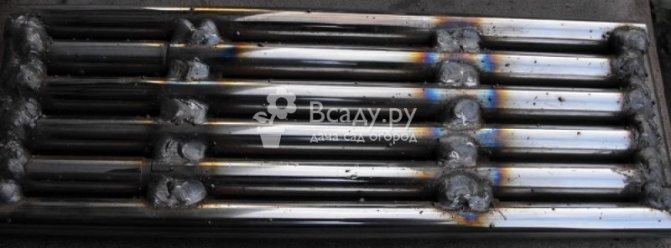

Homemade grate bars for a brick bath
The stones for the stove must be round and sized so that they can be loaded and unloaded through their chamber door without difficulty. The role of boulders can be played by medium-sized pieces of broken insulators of high-voltage lines. They are made of heat resistant glass and are resistant to rapid temperature changes. But the heat capacity of glass is worse than stone, such a furnace will cool down faster.
Step-by-step instruction
The work on the portal should be carried out in accordance with the preliminary construction plan and preliminary calculations. For example, a masonry of 45-50 pieces of bricks assumes a consumption of 20 liters of working solution. The stages of work are as follows:
- For self-preparation of the solution, clay, sand and water are mixed in a ratio of 4: 2: 1.

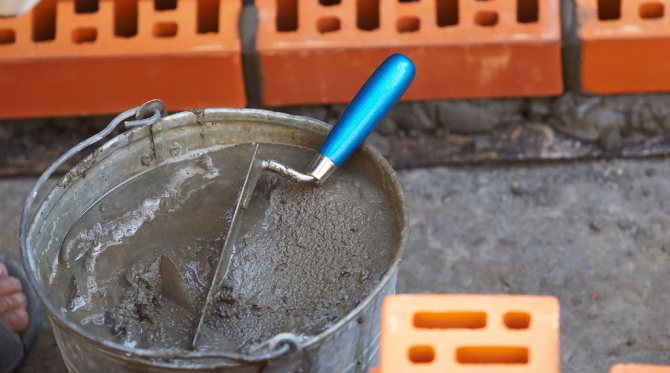
- At the first stage, the base is laid. The lower rows of a brick structure should be as even and neat as possible, which will allow you to get a beautiful and durable furnace portal. The distance from the walls to the masonry can vary within 5–15 cm. The side parts of the portal are erected with the obligatory suture dressing after marking the place for the door. All excess cement mixture is removed with a trowel, and the rows are aligned in height with a hammer. The free joint space is used for subsequent grouting.

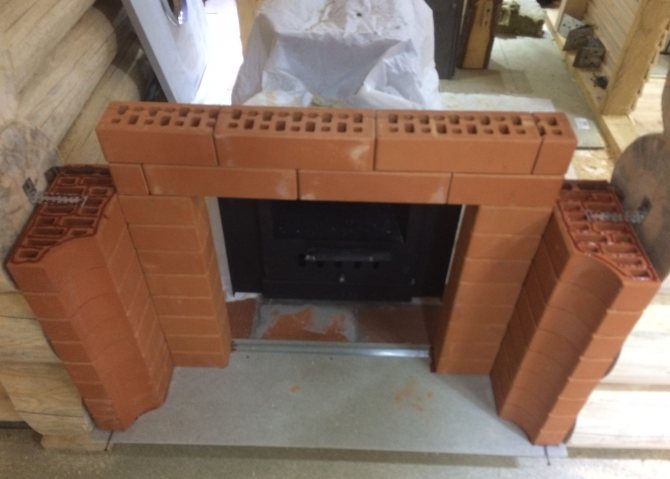
- The connection of the combustible walls of the room and the brickwork should not be made directly, therefore, a layer of the so-called refractory must be laid between them. Most often, modern, but quite affordable materials are used for this purpose, including special mineral wool without any organic fillers, as well as special basalt cardboard. The same rule applies when arranging the space between the brick and the fuel channel.

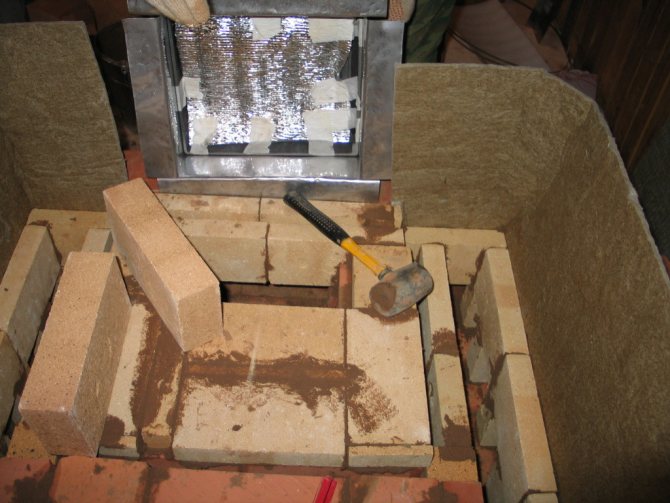
- At the final stage of creating the portal, an individual decorative finish is carried out, which is the design completion of the project.A variety of figures can be laid out on the front side of the stove with a firebox and a firebox, or special linings made of refractory materials can be mounted. A worthy alternative would be beautiful carved or solid-type platbands, which very effectively hide all the cracks.

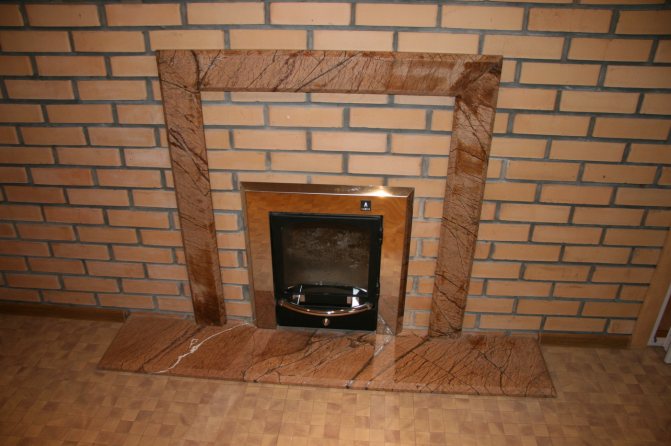
A brick U-shaped structure, called a portal, frames a bath stove with a remote-type firebox. Such a self-made device has not only a practical purpose, but also plays the role of decoration.
